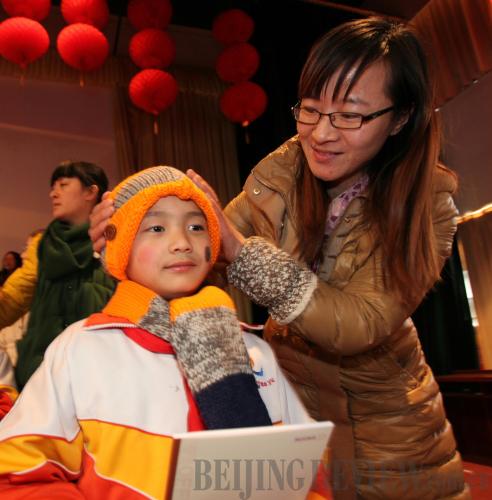|
 |
|
NEW YEAR GIFT: A volunteer gives a hat as a present to a student at a local primary school in Wendeng, Shandong Province, on December 31, 2013. Volunteer participated in a care-giving program for rural children whose parents work in cities (XINHUA) |
Space Trip
Chinese travelers will be able to take trips into space by the end of 2014 thanks to an agreement signed on December 27, 2013 in Beijing between a Chinese travel agency and the Netherlands-based space tourism firm Space Expedition Corp.
Travelers will pay a minimum of 580,000 yuan ($95,000) to board the Lynx Mark I spacecraft produced by U.S. private aerospace company XCOR, said Zhang Yong, CEO of Dexo Travel, a Chinese travel agency focusing on high-end travelers.
The Lynx Mark I spacecraft, which is expected to begin flights in the fourth quarter of this year, will take participants to a height of 60 km above Earth.
The spaceship arrives in outer space 60 minutes after takeoff and remains there for 20 minutes while the passenger enjoys the view, according to Zhang.
Online Extension
Expatriates can apply for resident permit extensions online as part of five new services, the Shanghai Exit-Entry Administration revealed.
Starting on January 2, 2014, foreigners can submit an online application and then bring all required documents to the administration's office in the Pudong New Area on the appointed date. Residence permits will be issued within one hour.
Satellite Tested
China's high-definition Earth observation satellite, Gaofen-1, has been formally put into service, the State Administration of Science, Technology and Industry for National Defense (SASTIND) said on December 30, 2013.
The satellite has undergone eight months of in-orbit tests since it was launched into space on April 26, 2013. It not only met requirements, but outperformed what was expected when it sent back high-quality images, according to the SASTIND.
The satellite will provide assistance for geographic and resource surveys, environment and climate change monitoring, precision agriculture, disaster relief and city planning.
Gaofen-1 has given China self-sufficiency in obtaining more high-resolution Earth observation data, and China's use of remote-sensing satellites has entered a new phase, said Xu Dazhe, head of the SASTIND.
Gaofen-1 is the first in a series of satellites to be launched for high-definition Earth observation by 2016. It is also the first low-orbit remote-sensing satellite designed to be in use longer than five years. | 